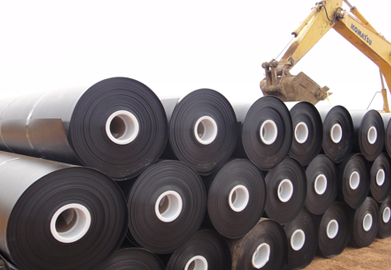Features and applications of HDPE geomembranes
2023-11-10
High-Density Polyethylene (HDPE) geomembranes are synthetic sheets or liners used in geotechnical engineering and environmental applications. These geomembranes are made from high-density polyethylene, a type of thermoplastic known for its strength, durability, and chemical resistance. HDPE geomembranes play a crucial role in various industries, particularly in environmental containment and waste management. Here are some key features and applications of HDPE geomembranes:
1. Material Characteristics:
- High Density Polyethylene (HDPE): HDPE is a polymer with a high strength-to-density ratio, making it resistant to punctures and environmental stress cracking.
- Chemical Resistance: HDPE is resistant to a wide range of chemicals, making it suitable for containment applications where exposure to various substances is a concern.
2. Applications:
- Environmental Containment: HDPE geomembranes are commonly used in the construction of landfills, waste containment facilities, and other applications where preventing the migration of contaminants is critical.
- Water and Wastewater Storage: Used in the construction of reservoirs, ponds, and tanks for the storage of water and wastewater.
- Mining: HDPE geomembranes are employed in mining operations for containment of leach pads, tailings ponds, and other applications.
- Aquaculture: Used in the construction of ponds for fish farming and other aquaculture applications.
3. Advantages:
- Chemical Resistance: HDPE geomembranes provide excellent resistance to a wide range of chemicals, acids, and alkalis.
- UV Resistance: Many HDPE geomembranes are manufactured with additives to enhance resistance to ultraviolet (UV) radiation, increasing their lifespan in exposed applications.
- High Strength and Tear Resistance: HDPE geomembranes offer high tensile strength and tear resistance, contributing to their durability and long-term performance.
- Flexible and Weldable: HDPE geomembranes are flexible and can be welded together using various methods, creating a seamless and impermeable barrier.
4. Installation Techniques:
- Extrusion Welding: The process of joining HDPE geomembrane panels using heat and pressure.
- Hot Wedge Welding: A technique where a heated wedge is used to join adjacent geomembrane sheets.
- Seaming: The process of creating strong, durable seams between geomembrane panels to ensure a continuous barrier.
5. Thickness and Sizing:
- HDPE geomembranes are available in various thicknesses, and the appropriate thickness is selected based on the specific requirements of the application.
HDPE geomembranes are a critical component in environmental protection and containment systems, providing reliable and cost-effective solutions for a wide range of engineering and construction projects. Proper installation and quality control are essential to ensure the effectiveness of HDPE geomembrane systems over their operational life.



